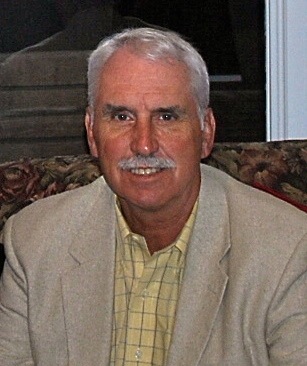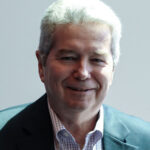The LEI senior executive series on Lean Leadership
 |
“I learned that you have to focus on one value stream, go as deep as you can, put not only tools in place but systems and measurements to sustain the improvements.” |
While leading a lean transformation as vice president of Global Operations at Medtronic Surgical Technologies in Jacksonville, FL, Jerry Bussell also co-founded the Jacksonville Lean Consortium to help local businesses and government improve. An executive advisor now to Underwriters Laboratories and president of Bussell Lean Associates, he is working on a book about lean leadership to be published in late 2012. He talked with the Lean Enterprise Institute (LEI) on the lessons he learned about leading lean transformations.
LEI:What was the business reason for launching a lean transformation at the Jacksonville plant?
Bussell: We were doing continuous improvement and had some very good success. However, a new top management team began to rapidly accelerate the top line growth of the company. The then chairman and CEO gave me a challenge in 1998 to make sure operations could support the business during accelerated growth. He gave me a year to find the best strategy for continuous improvement that would prepare us for the next five years and beyond.
I started benchmarking companies, looking for some sort of road map for a strategy, but I wasn’t very successful and I was pretty confused about how to approach it. Then I happened to get a brochure for the Shingo Prize improvement model and it really piqued my interest. At the Shingo conference, this word “lean” kept coming up. I thought I knew what it was but realized that I had a very superficial understanding. At one of the breakout sessions, a company that had been at its lean transformation for only a year described some very good results it was getting. I looked at the three managers I had brought with me and said, “I think we can do this.” The other guys said, “We definitely can.”
The next day we went to a session on value-stream mapping by Mike Rother [co-author with John Shook of Learning to See] and that was a great eye opener. We realized the lean transformation had to be done very systematically. We began reading Learning to See, Lean Thinking and other books. At work, I told other executives about lean. They were enthusiastic because I was very passionate about what I was learning. When the time came to make my presentation to Chairman and CEO Jim Treese and senior staff, he stopped me after 20 minutes. He stood up and said, “This is the best thing I’ve heard in 25 years. We’ll do it.”
LEI:Where did you begin the lean transformation?
Bussell: I had a burning platform at a plant in France. It had the best quality in the world at making hand-held steel instruments but we couldn’t deliver on time and customers were up in arms. We value-stream mapped the plant, which was organized by process islands, then we laid it out in product-family cells and began to systematically implement continuous improvements on a daily basis.
Back in Jacksonville, I had 20 people learn how to value-stream map. We mapped three main product family value streams, beginning with the one that had the most critical problems. Mapping gave us a much more systematic approach to implementing improvements instead of running separate kaizen events one after the other. But the mistake we made was not going deep enough. We did the first value stream, then moved on to the next. We got flow going in the first value stream but we didn’t get all the supporting systems in place. I learned that you have to focus on one value stream, go as deep as you can, put not only tools in place but systems and measurements to sustain the improvements.
LEI: Did you have to change anything about the way you managed and led people to get the results from the lean transformation?
Bussell: Managing and leading are completely different in a lean business. Instead of giving people answers, you have to ask them good questions so they learn how to solve problems and find answers. We learned early on that if you gave people answers, management owned the problems. We wanted the transformation to belong to the people doing the work
LEI: What were the business reasons for starting the Jacksonville Lean Consortium?
Bussell: One of the things that inspired me was that [LEI Founder] Jim Womack always talked about the idea of a Lean Community. So two years into the transformation we were really successful, winning the Shingo Prize and influencing Medtronic to implement lean companywide. I thought it would be great if we could do something in the Jacksonville community.
After two years of trying to get it off the ground, I was invited to speak at a conference in Jacksonville. I had 10 people at my presentation but one of them was Bruce Ferguson, the president of Worksource who came up to me and said he could help. The next week, I spoke to his board of directors next week, submitted an application for a grant, and got $375,000 to found the Jacksonville lean consortium. Lad Daniels, who I consider a co-founder of the consortium, was president of the First Coast Manufacturers Association, which helped us organize and gave us support.
Our vision was to make Jacksonville the center of excellence for lean thinking in North America. It took off pretty quickly. We now we have about 45 member companies. Recently we the Chamber of Commerce joined and the University of North Florida’s School of Business. So we feel now that it’s really going to take off. Our goal is to get to over100 organizations, public, private and government.
What we’ve learned is that you can provide lean training but the key to being successful is to go do it. Now, we’re moving more into helping companies get together for improvement events. We do have training but the key is to help companies collaborate, to do events together so they learn from one another. We’ve had week long and one-day events with private and public companies and at nonprofits.
LEI: What are the advantages of a consortium?
Bussell: The big benefit is learning by doing. A consortium lets you leverage all the knowledge that’s in it. People learn by doing with people who have the experience and are willing to share. It’s the collaboration. The more people you haves in the consortium the more resources you van leverage among the members.
One of the big challenges of doing lean is that’s it’s a long-term journey; it’s not easy. The more you can associate with other companies that are on the journey, the more people you’ll have for support and encouragement. I think that helps you sustain what you accomplish.
LEI: What advice would you give to a manager or executive who is thinking about starting a consortium?
Bussell: Go see. Go look at what’s been done by others, understand the consortium models that are out there so you can learn the lessons that we had to learn the hard way. You’ll understand how to have companies work together and how to structure the consortium.
LEI: Finally, we get calls from middle managers who have bought into a lean transformation but their senior management hasn’t. As a senior manager, what could a middle manager have done to convince you to make the leap to lean thinking?
Bussell: Solve one of my problems. Ask me what my biggest problem is, then go solve it by applying lean principles. That becomes very compelling.
The second thing is to take senior managers on a plant visit to another company so they can see what the benefits of lean are. Visit companies that have been at it for a long time and have inculcated lean concepts into their cultures and are spreading lean concepts beyond the manufacturing floor.
The third thing to do is implement lean in your area. Create a compelling example of what can happen if you go deep. Put everything — problem solving, value-stream mapping, flow, visual controls — into a pilot area and do an exceptional job to show senior management what’s possible. Give them the proof.
People try to sell senior managers on doing a program approach to lean. And that doesn’t work. What I missed and what a lot of people miss is that when you start senior management on a lean transformation, you have to do strategy deployment first. That is absolutely critical. Strategy deployment will show top management that lean thinking is an enabling strategy that will help them execute the business strategy. Lean isn’t separate; it’s not a program. It’s integrated into every facet of the business.






